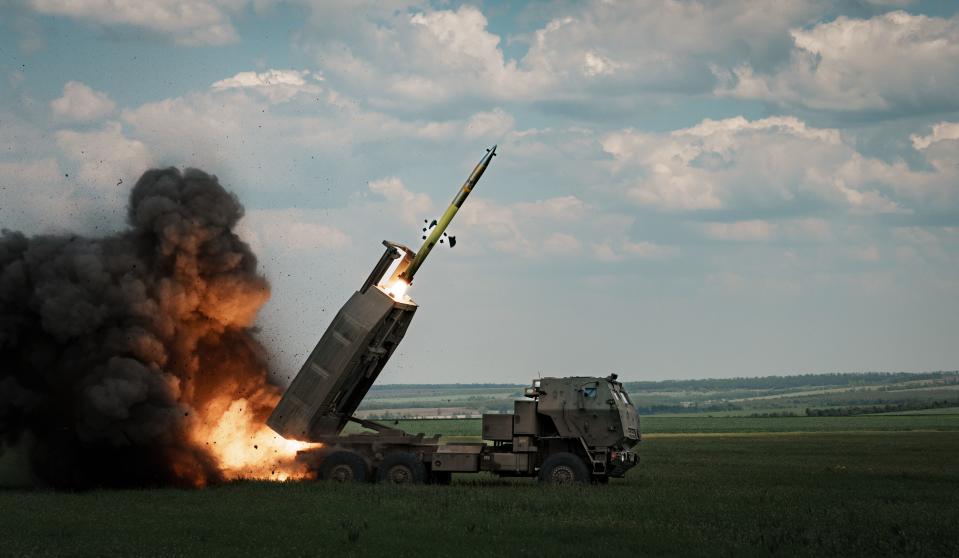Ukraine's air-defense problems are letting Russia launch HIMARS-style deep strikes behind the front lines
Ukraine's air defense capabilities have become increasingly strained.
Russia is now fielding more reconnaissance drones.
The improved battlefield picture is giving Russia the ability to launch HIMARS-style strikes.
Ukraine's struggling air-defenses have opened doors for the Russians to launch their own strikes similar to Ukraine's HIMARS attacks.
Russia has begun sending out an increased number of unmanned aerial vehicles beyond Ukraine's positions, gaining intelligence about the positions of critical weapons and sites that can then be targeted by guided tactical missiles.
Russia's heightened UAV presence is "allowing their troops to accurately detect and destroy targets behind the front lines," senior research fellow Dr. Jack Watling of the London-based Royal United Services Institute wrote in an analysis on Tuesday.
Russia has not had sufficient ISR for much of the war due to robust Ukrainian air defenses, but as Ukraine reserves its limited interceptors for Russian jets, "Orlan-10 UAVs are now roaming far and wide over the front lines," he said.
With better targeting, Russia is executing strikes behind the lines with Iskander tactical ballistic missiles and rocket launchers like the Tornado-S system.
The attacks mirror in the kind of strikes that Ukraine has carried out Russia with rockets and missiles fired from US-provided High Mobility Artillery Rocket Systems, or HIMARS.

"In recent days Russia managed to strike a Ukrainian Buk air defence system and catch two Ukrainian helicopters on the ground while they refuelled," Watling wrote. "There have been other notable strikes of a kind that Russia has long aspired to but rarely successfully executed."
Russia was originally unable to defeat or conduct the same kind of strikes as Ukraine's HIMARS due to a lack of precision, targeting capabilities, and timely intel.
These strikes, like the glide bomb attacks as Russian air forces have gained greater maneuverability, further strain Ukraine's military, which is facing continuously depleting resources as Russian forces have 510,000 soldiers on the front lines and compounding advantages.
These developments in Russian capabilities come as Russia sets the stage for a summer offensive, which could significantly pressure Kharkiv and areas around Zaporizhzhia before a push in the Donbas.
Ukraine is still waiting for more aid from its international partners that would boost increasingly weak areas in combat training, munitions, and industrial capabilities.
"So long as Ukraine lacks materiel, Russia will begin to compound its advantages," Watling concluded.
There are some things that only Ukraine can do, though. Watling said Ukraine needs to mobilize a sufficient number of troops and establish a training pipeline that would "not only replace losses in its existing units, but also raise enough units to manage their rotation on and off the line."
"This allows troops to be trained as well as the recovery of reserves," he said. But if international partners fail to provide artillery, air defenses, electronic warfare systems, and other enablers, then Kyiv's forces will struggle.
"The outlook in Ukraine is bleak," Watling wrote. But with the right effort and support, "then Russia's summer offensive can be blunted."
Read the original article on Business Insider

